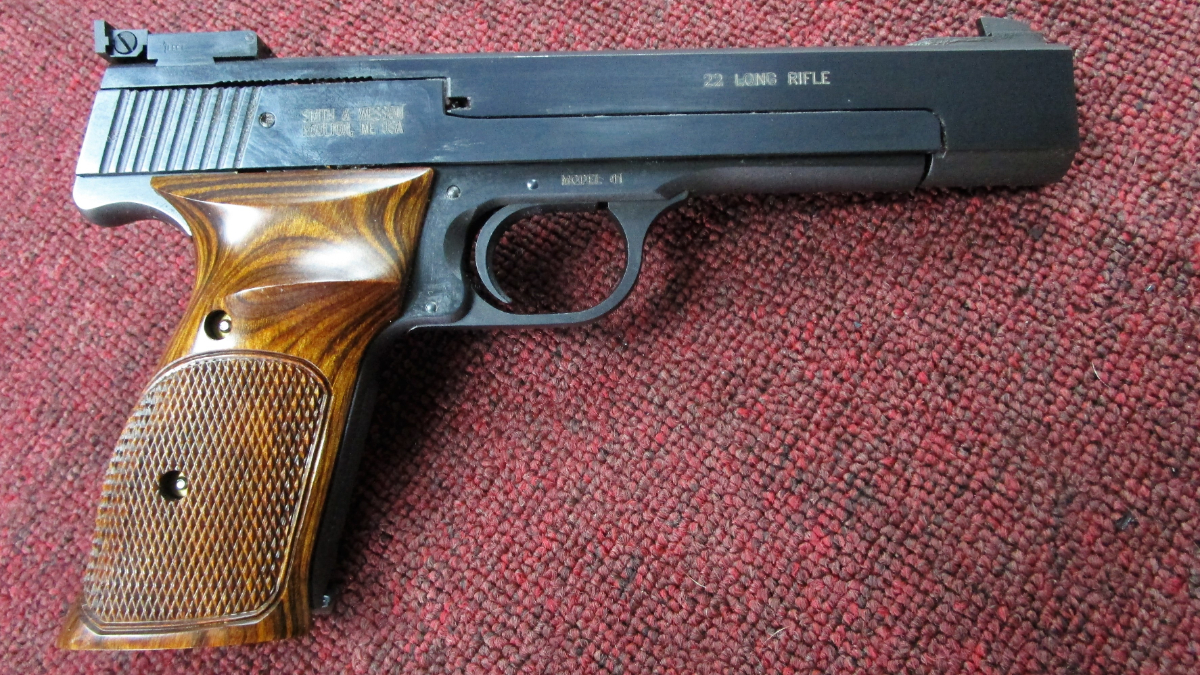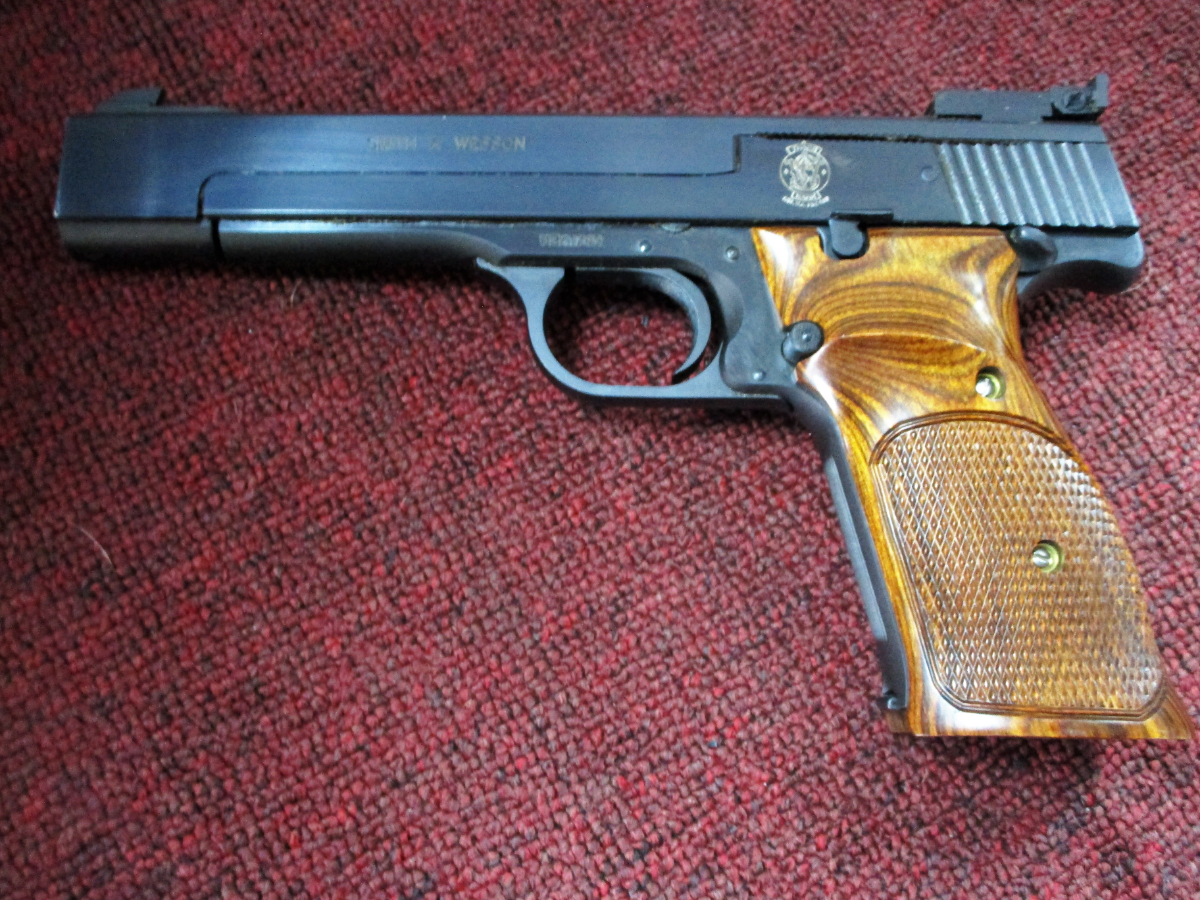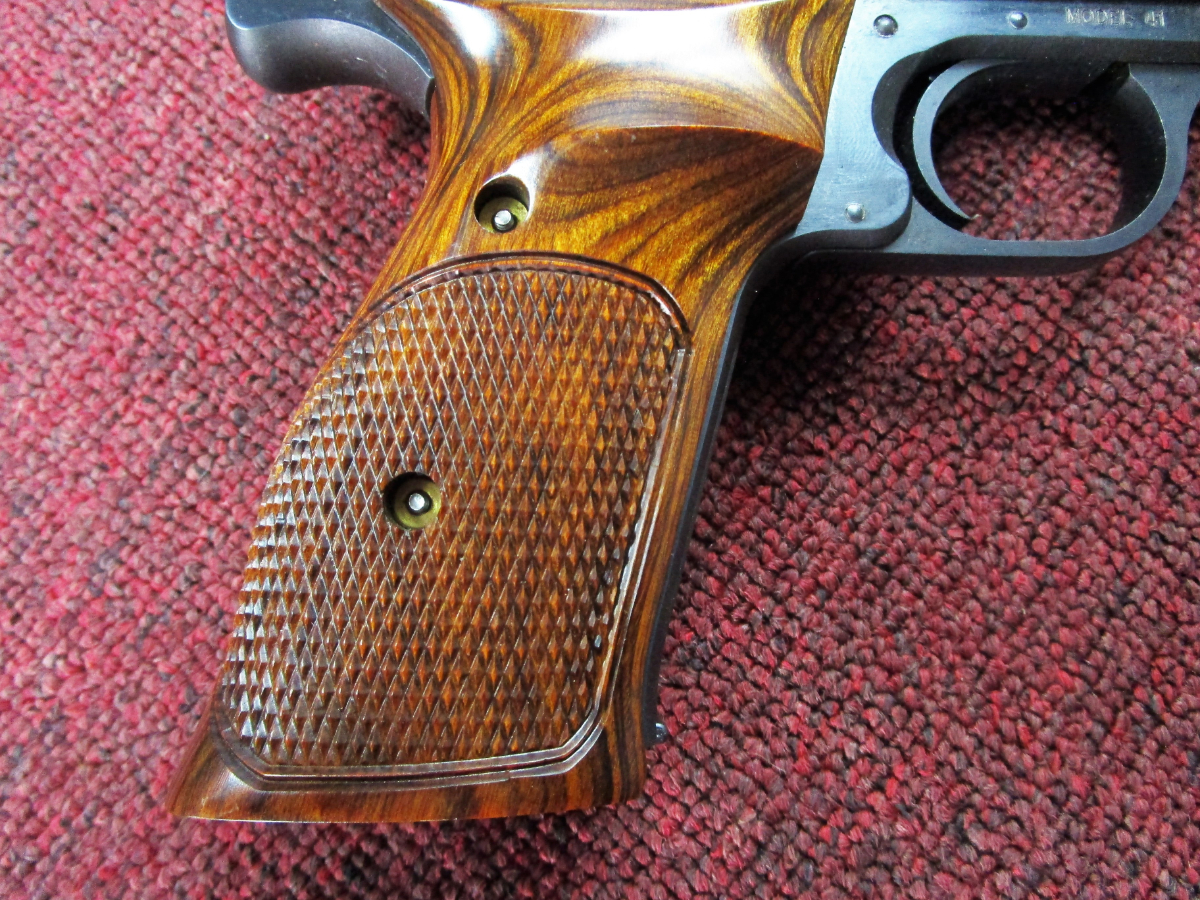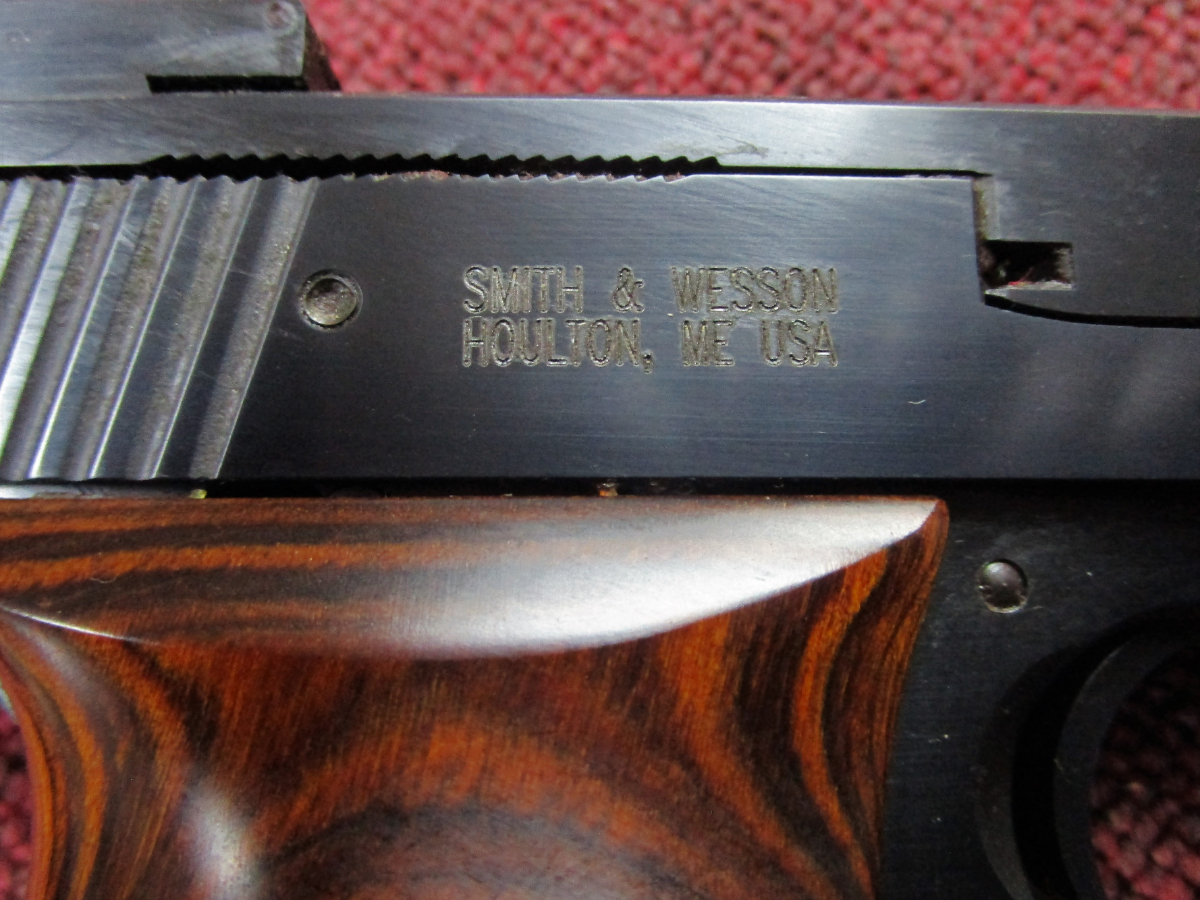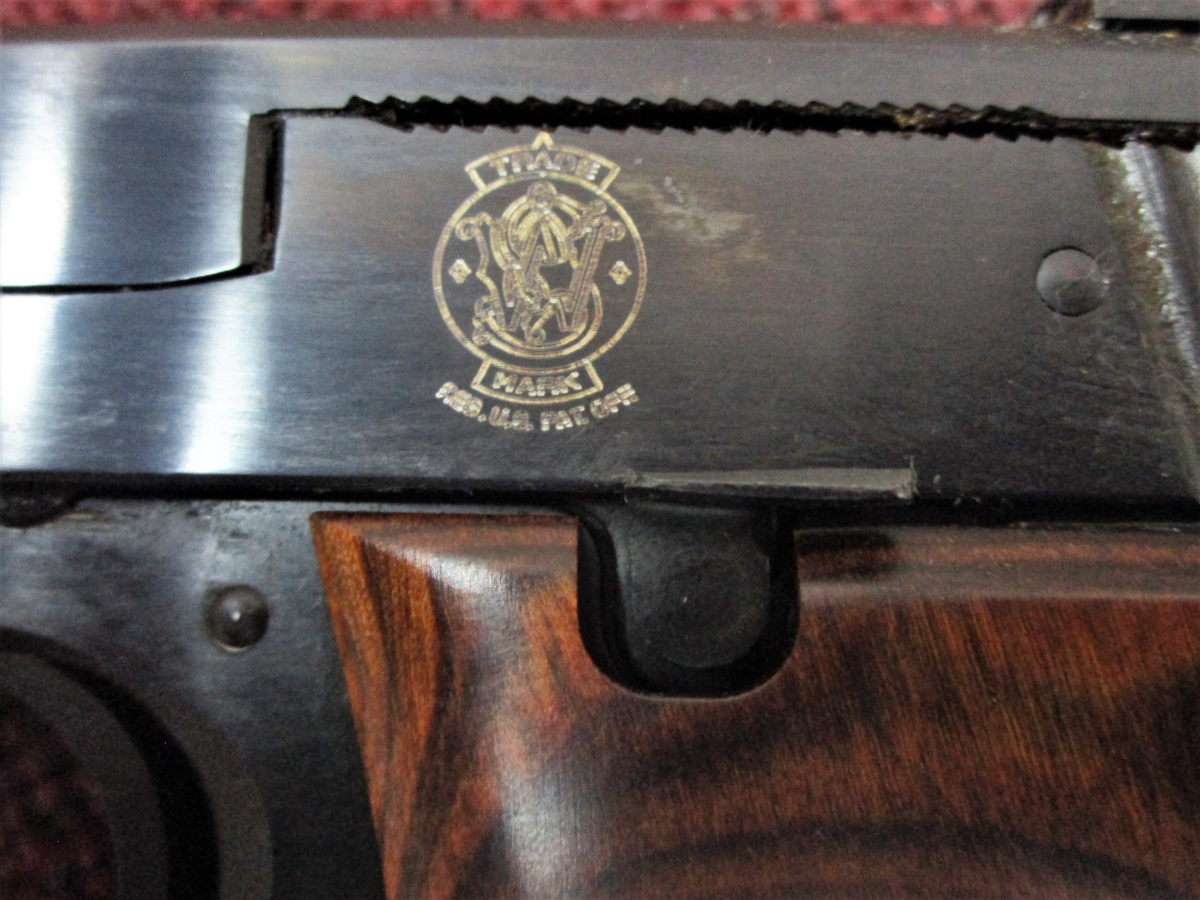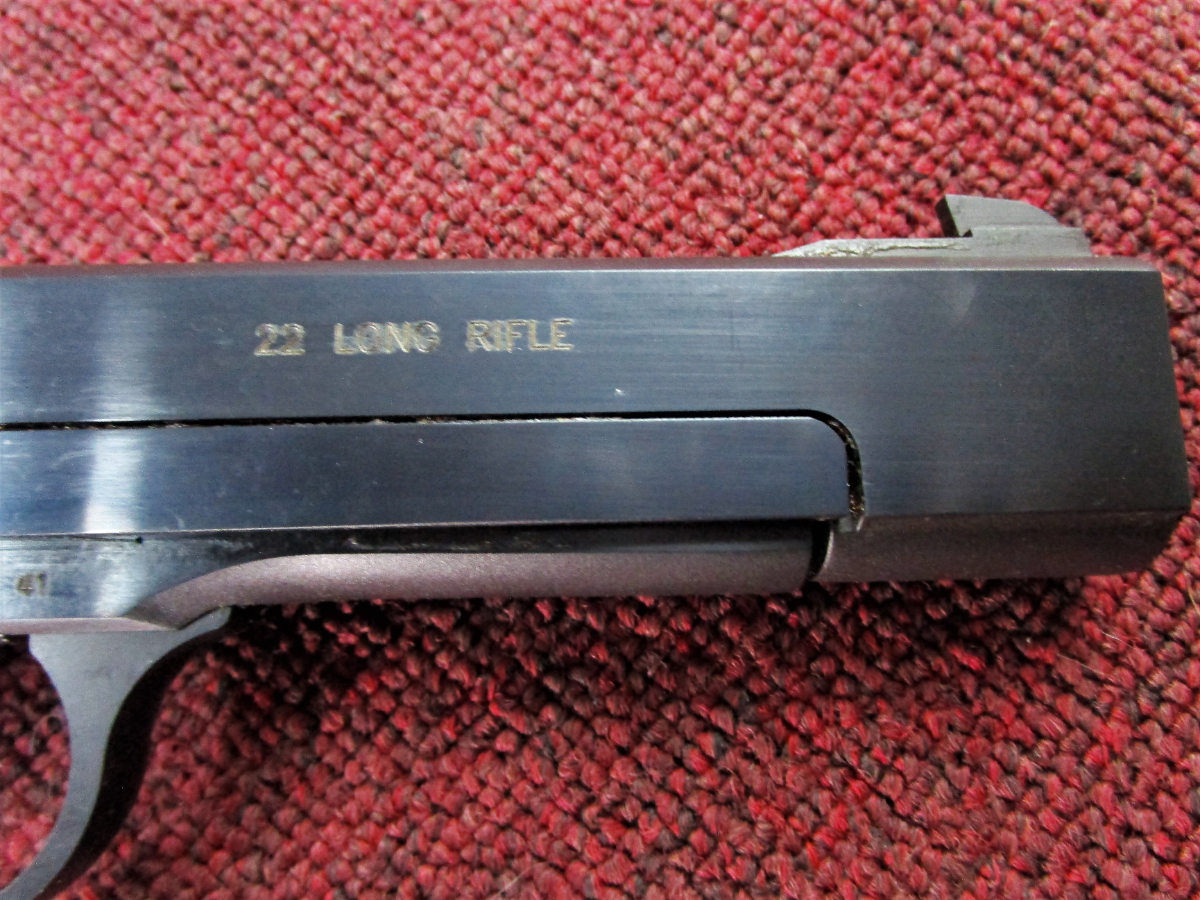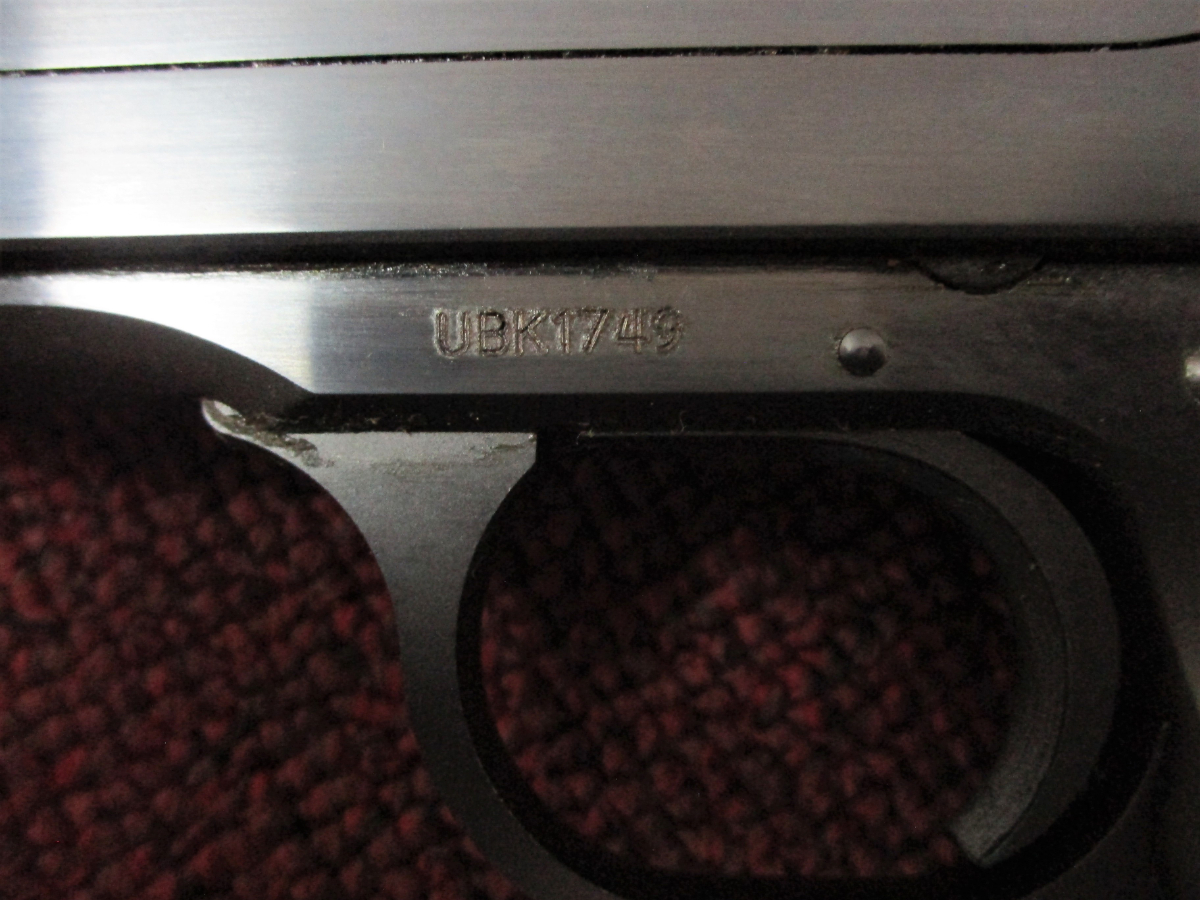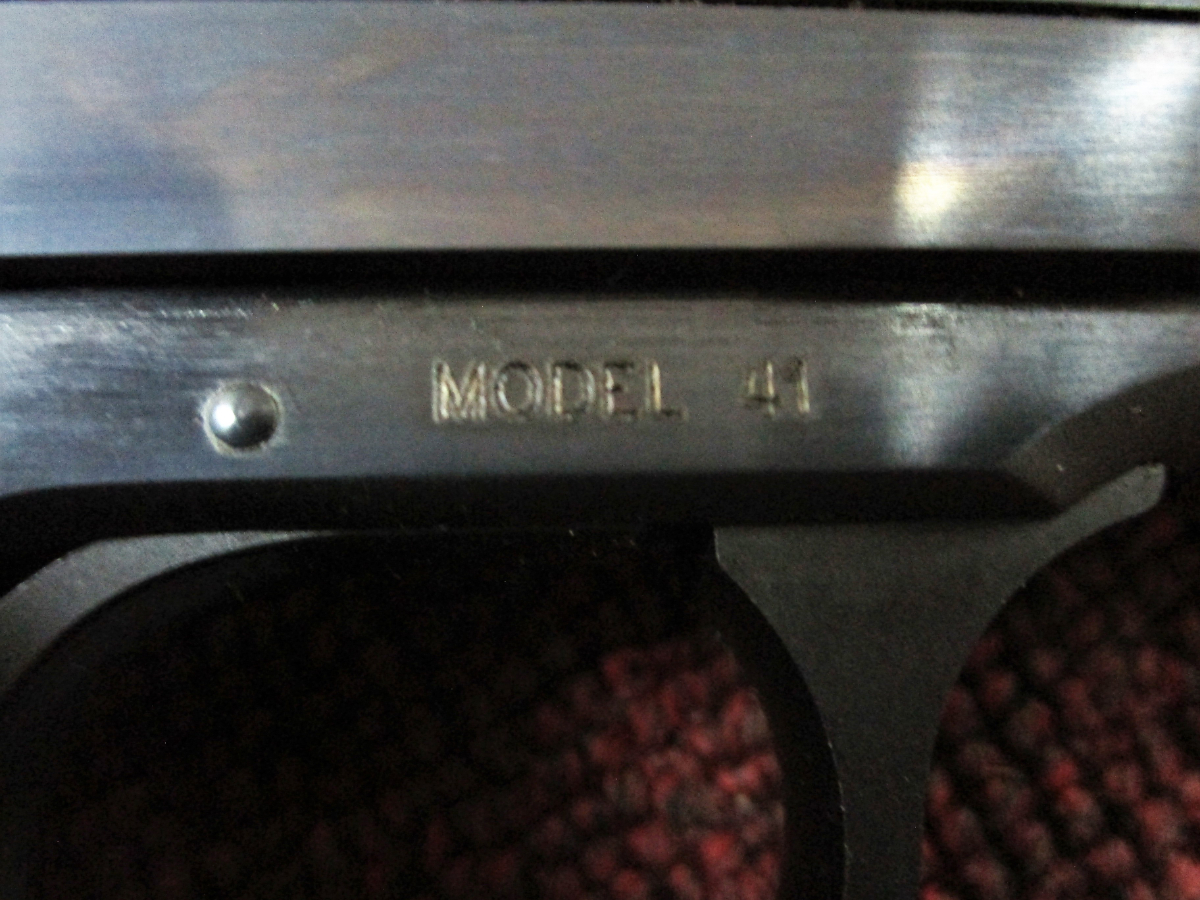Category: All About Guns
When a gun has been in production for more than 100 years like the SA-22, labeling its design as a ‘success’ is a massive understatement.
Why this semi-auto rimfire is one slick shooter:
-
- The svelte little .22 rifle has been in production for more than a century.
- It was designed by John Browning.
- It was also the first semi-auto chambered for the .22 rimfire cartridge.
- Spent casing are ejected downward.
- The cocking button is on the underside of the receiver.
- The Browning .22 Auto Rifle is a takedown.
- Top examples of certain Belgium-made versions of the rifle can fetch $3,250.
The svelte little .22 rifle, known by Browning variously as the SA-22, .22 Semi-Auto or just Auto Rifle, has been in production for more than a century. The John M. Browning design was the first semi-auto rifle made for the .22 rimfire cartridge. It has been called a rifle that was appropriately designed for its cartridge — slim, light and easy handling. It was manufactured by Fabrique Nationale in Belgium beginning from 1914, but it wasn’t imported to the United States until 1956. Production continued at FN until 1974, when it was moved to Miroku in Japan, where most Browning rifles and shotguns have been made ever since.
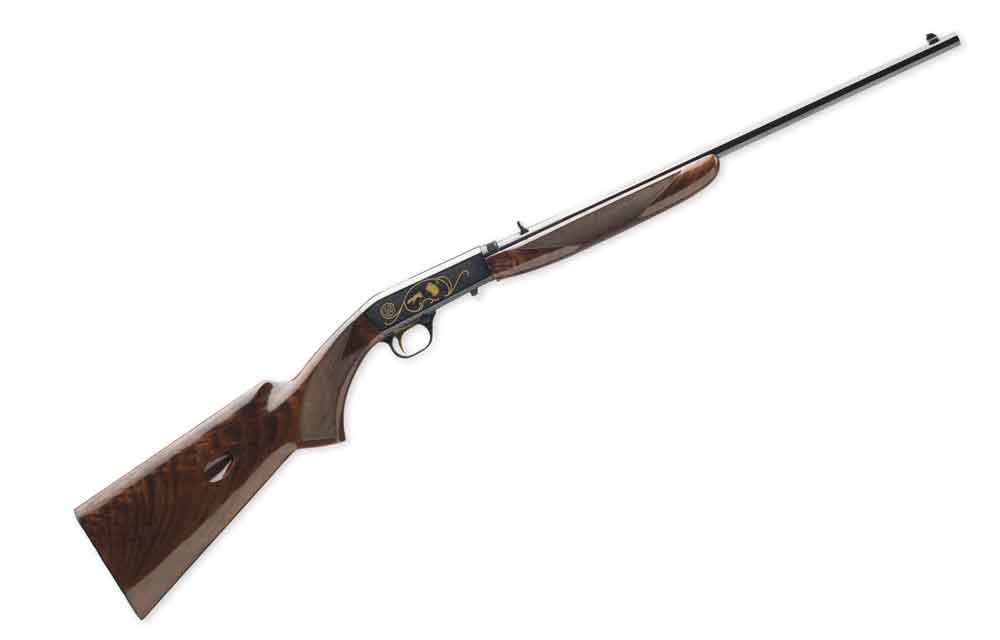
This Limited Edition SA-22 commemorates the 100th anniversary of the rifle. A similar rifle was made by Remington from 1919 to 1949 as the Model 24 and 241, under license from Browning. The main difference in the Browning and Remington versions had to do with a slight variation in the take-down system for removing the barrel. The Brownings were also cosmetically a bit nicer, with attractive checkering, wood, fit and finish.
I recall as a youngster seeing my first Browning .22 Semi-Auto at a gun store in downtown Austin, Texas, and being quite impressed. This was in the late ‘50s, and I recall the price being about $85. I was especially impressed with the .22 Short model. - My experiences with Texas fox squirrels taught me that .22 Short hollow-points were a fine choice for bushy-tails at reasonable ranges. Over the years I kept telling myself that I really needed one of the Short models, but somehow I never got around to buying it. They have been discontinued for several years, and these days the used ones are going for $1,000 or more. Lesson here for younger shooters — don’t wait too long for something you really “need.”
The Unique Browning .22 Auto Rifle
The .22 Auto Rifle design has several unique features that many shooters find appealing. The most noticeable is the downward ejection of empties. I’ve heard that this was to avoid ejecting the shells into the face of a person standing next to the shooter — the downside is that a hot shell can drop down into the sleeve of the shooter’s shirt.
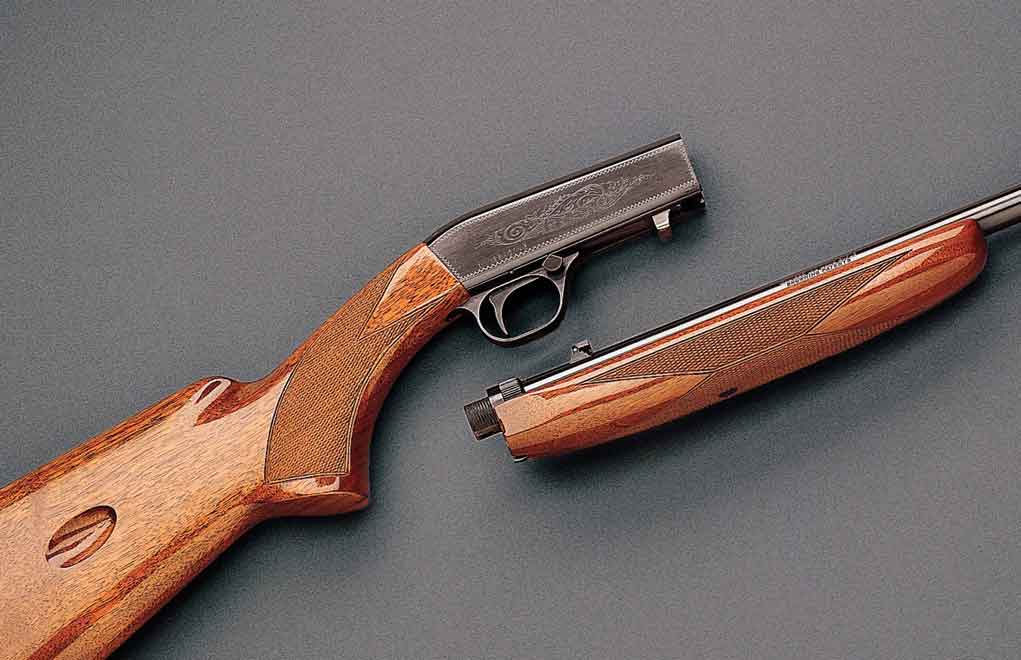
- Another distinctive feature is the cocking button on the underside of the receiver. This design, coupled with the ejection port on the bottom, gives the SA-22 a nice, flat surface on both the right and left sides of the receiver. Previously mentioned is the take-down feature, allowing the barrel to be easily removed without tools by way of the knurled ring at the rear of the barrel that can be turned with the fingers.
- Operation of the Browning .22 Auto is simple: Turn the loading tube in the buttplate to the left and pull it out far enough to expose the port on the right side of the buttstock, insert up to 10 .22 LR cartridges or 16 shorts (if you have a shorts-only model), reach under the receiver in front of the trigger guard, and pull back and release the cocking lever.
Make sure to use the button-operated safety in the front part of the trigger guard. Some of the early models have the loading port on top of the buttstock, directly behind where the stock meets the receiver. I believe these models are made in Belgium and marked “Fabrique Nationale” and not “Browning.”What To Look For In A Browning .22 Auto Rifle
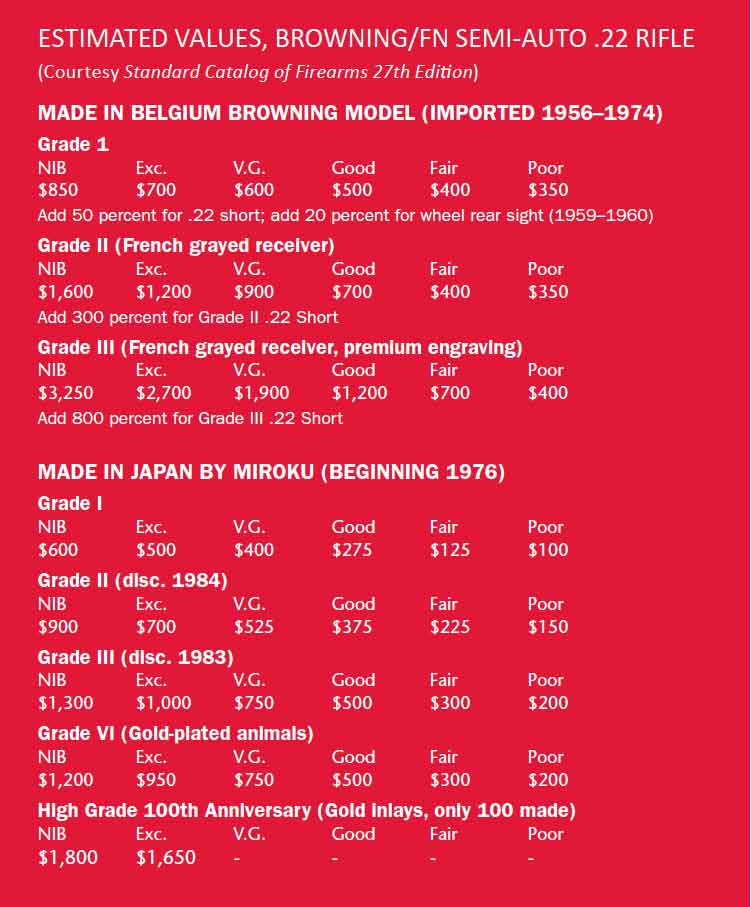
There have been several high-grade models with varying levels of engraving and wood. Some SA-22s I’ve seen had very nicely figured walnut stocks. The chart shows some current values, courtesy of the 2017 edition of Standard Catalog of Firearms.
Many collectors, as is often the case, are mainly interested in older models, especially those made in Belgium. The Miroku rifles, however, are very high quality and will likely show increases in value in the future. For small-game hunting or casual plinking, there isn’t a nicer .22 to take on a stroll in the woods than the Browning SA-22.
Editor’s Note: This article originally appeared in the May 2018 issue of Gun Digest the Magazine.












Lot 103: Bat Masterson’s Colt Single Action Army and Holster Rig
Auction Date: May 14, 2021
Extraordinarily Historic and Incredibly Well-Documented Special Order High-Sight Colt Single Action Army Revolver and Holster Rig, Personally Ordered, Owned and Carried by American Legend, Western Lawmen and Gunfighter, Bat Masterson, with Colt Factory Letter and Additional Documentation
Extraordinarily Historic and Incredibly Well-Documented Special Order High-Sight Colt Single Action Army Revolver and Holster Rig, Personally Ordered, Owned and Carried by American Legend, Western Lawmen and Gunfighter, Bat Masterson, with Colt Factory Letter and Additional Documentation
“Nothing is more symbolic of the stature of the legendary Bat Masterson than his firearms, tools of the trade for a lawman, a professional hunter, a gamble, and even a frontier businessman – whose main trade was in that most treasured of American institutions, the saloon.” wrote R.L. Wilson in an included detailed letter on this historic revolver and Bat Masterson’s life and legacy. Throughout the world, the Colt Single Action Revolver is recognized as the greatest symbol of law enforcement and gunplay in the American West, associated with virtually every legendary character and major event of the time. Bat Masterson, one of the most heralded of gunfighters, was more than a legend. He was an absolutely fearless man of resolute character and a seriously respected shootist. He was a contemporary associate and personal friend of Wyatt Earp, Doc Holliday, Charlie Bassett, Dave Rudabaugh, Buffalo Bill Cody, Billy Dixon, Luke Short, and Jim Courtright. Unlike many of the “legends”, many of Masterson’s exploits and involvement in multiple shootouts of the Wild West in the 1870s and 1880s are fully documented, some in sworn court testimony. How many men he killed ranges anywhere from 3 to over 20, not including Native Americans he may have shot in battle. The number of wounded is even more impressive, as Masterson was not considered a “killer” of men, but rather an “enforcer” of law. He was intolerant of bad behavior. If you opposed him you were taking a risk, and Masterson did not suffer fools gladly. Born in Quebec, Canada on November 24, 1853, William Barclay “Bat” Masterton’s birth name was Bartholomew. He grew up on farms in New York, Illinois and eventually near Wichita, Kansas where his family moved while still a youth. In his late teens, he left home with his brothers to become a buffalo hunter, plainsman and scout. While engaged in buffalo hunting at the age of twenty and beginning at dawn on the 27th of June in 1874, he was one of twenty-eight buffalo hunters and one woman that held off a deadly five-day siege of an estimated 700 Comanche, Kiowa and Cheyenne warriors under the leadership of Comanche war leader Quanah Parker at the Second Battle of Adobe Walls, a well known trading post in the Texas Panhandle, just north of the Canadian River. The complex included a store, a sod saloon and restaurant owned by James Hanrahan, a blacksmith shop and corral, and a sod store used to purchase buffalo hides, all of which served the population of 200-300 buffalo hunters in the area. During the horrific fighting, somewhere between 30 and 70 of the native warriors were killed. How many of them died from bullets fired by Masterson is impossible to say. In Billy Dixon’s words: “There was never a more splendidly barbaric sight. In after years, I was glad that I had seen it. Hundreds of warriors, the flower of the fighting men of the southwestern Plains tribes, mounted upon their finest horses, armed with guns and lances, and carrying heavy shields of thick buffalo hide, were coming like the wind. Over all was splashed the rich colors of red, vermillion and ochre, on the bodies of the men, on the bodies of the running horses. Scalps dangled from bridles, gorgeous war-bonnets fluttered their plumes, bright feathers dangled from the tails and manes of the horses, and the bronzed, half naked bodies of the riders glittered with ornaments of silver and brass. Behind this headlong charging host stretched the Plains, on whose horizon the rising sun was lifting its morning fires. The warriors seemed to emerge from this glowing background.” At first, it was difficult for the hunters to defend themselves with their long-range Sharps rifles as the Indians were amassed in close quarters about the buildings. They relied on their Henry and Winchester Rifles in 44 rimfire and revolvers (primarily Colt Conversions) in these closer quarters, barely surviving the initial onslaught. During the second day, the besieged buried or dragged away the dead horses and bodies to “prevent the evil smell from reaching the buildings”. During a break in the fighting on day 3, Dixon was credited with hitting one man from nearly a mile away with his long-range Sharps. Seeing their fellow warrior killed from such a distance apparently so discouraged the Indians that they decamped on day 5 and gave up the fight. A week later, 25 men headed back to Dodge City, including James Hanrahan, Masterson and Dixon. In response to this and other incidents on the Southern Plains, Colonel Nelson A. Miles was ordered to lead an expedition against the Indians of the Texas Panhandle in what would become known as the Red River War. Masterson joined the expedition as a civilian scout working out of Fort Elliot in what was then called Sweetwater, Texas. The next spring he returned to buffalo, becoming a frequent visitor to the many saloons in the area. By early 1876, he was working as a faro dealer in Henry Fleming’s Saloon. He claimed his first life in self-defense in 1876 in a classic western conflict involving a woman in a saloon where he was working as a dealer. In that instance, Masterson was confronted by Army Sergeant Melvin A. King who was romantically interested in Mollie Brennan and who Masterson had been with that evening. King shot Masterson in the pelvis and then Brennan in the stomach. Masterson returned fire, hitting King in the heart. Both King and Brennan were killed. The injury caused Bat to walk with a limp, and he adopted the use of a cane for a short period. After recovery, Masterson returned to Dodge City where he became a lawman along with his friend Wyatt Earp under Ford County Sheriff, Charlie Bassett. These were the years that Dodge City was known as a “wicked little town”. Bat was elected Sheriff on November 6, 1877, with the Dodge City Times stating before his election: “He is well qualified to fill the office, and, if elected, will never shrink from danger.” and after; “Bat Masterson, is said to be cool, decisive, and a bad man with a pistol.” Bat officially took the office of sheriff in January 1878 and wasted no time in putting his talents to work. On January 27, 1878, Dave Rudabaugh and four other men attempted to rob a train at Kinsley, Kansas. Their robbery attempt was ineffectual and the bandits fled. On February 1st, Sheriff Bat Masterson led a posse, which included his brother, Ed Masterson, in pursuit of the would-be robbers. They captured two of them — Dave Rudabaugh and Edgar West, apprehending the others soon after. Bat killed another man in 1878 in Dodge City, Kansas, where he was then sheriff of Ford County and where his brothers Ed and Jim were also working as lawmen. After ordering Jack Wagner, a rider for trail boss Alf Walker, to check his gun with a bartender at The Lady Gay Saloon in accordance with local ordinances, a scuffle ensued and Ed was shot in the stomach, his coat catching fire from the muzzle blast. Across the street and from 60 feet away, Masterson emptied his gun, hitting Wagner in the abdomen and Walker in the chest and arm. Bat then tended to his brother, who died in his arms about a half hour after the fight. Wagner died shortly thereafter. Walker survived long enough to get back to Texas where he died from pneumonia that resulted from his wound. Originally, Wagner’s death was attributed to Ed, but the locals knew who had actually fired the shots. In 1887, the newspapers recorded that when asked by the court in Topeka, Kansas, if he had killed 38 men, Masterson responded that “he had not, unless Indians were counted. He had killed a good many Indians, but had never killed any man except in self-defense. ‘I don’t let any body shoot at me,’ he said, ‘If folks let me alone I never hurt them.’ In a later libel case detailed in “When New York City Tamed the Feared Gunslinger Bat Masterson” by Gilbert King in the Smithsonian Magazine, “Masterson denied killing any Mexicans; any Indians he may have shot, he shot in battle. Finally, future US Supreme Court Justice Benjamin Cardoza rose to cross-examine the witness. ‘How many men have you shot and killed in your life?’ he asked. Masterson dismissed the reports that he had killed 28 men, and to Cardozo, under oath, he guessed that the total was three. He admitted to killing Sergeant King after King had shot him first in Sweetwater. He admitted to shooting a man in Dodge City in 1881, but he wasn’t certain whether the man died. He also confessed that he, and not his brother Ed, had shot and killed Wagner. He was also involved in several other shootouts as a lawman and private citizen in which people were wounded but not killed. In 1881, he likely shot and wounded Albert Updegraff after confronting him in relation to threats against his other brother, but he was not charged due to lack of evidence. By the time he received this revolver in the late 1880s he continued to be involved in controversies and dangerous activities such as gambling and romancing with women in western saloons. In 1888, he was the owner of the Palace Variety Theater in Denver, and was associated with con man and gang leader Soapy Smith. He was also involved in prizefighting. He moved to the East in the mid-1890s and was living in New York in 1895 working as George Gould’s bodyguard, and later returned to the West. By April 6, 1897, he was a deputy sheriff in Arapaho County Colorado. That day, he got into a melee with Tim Connors that resulted in another man getting shot in the left wrist by a shot from Masterson, likely using this very revolver. In 1902, Masterson was again living in New York City and was arrested on June 6, 1902, along with two other men accused of conning George H. Snow out of $17,000 in a bunko game. The charges were dropped, but Masterson was arrested again just a few days later on June 15 for carrying a concealed weapon, perhaps this Colt. He found work as a reporter at the New York Morning Telegraph and had a column titled “Masterson’s Views on Timely Topics” generally focused on sports including prize fights. He also worked as a timekeeper for fights. Masterson writings about his life in the West and about his many famous friends and fellow gunfighters helped secure him firmly as one of the best known western legends both then and now. Masterson became friends with President Theodore Roosevelt and was a regular visitor of Roosevelt at the White House. In response, Roosevelt appointed Masterson as a deputy U.S. Marshal for the Southern District of New York. Roosevelt was known for preferring to hire men of merit rather than based on personal and political considerations, and Masterson’s western reputation no doubt found favor with Roosevelt who was fond of the hard men of the American West. In his appointed position, Masterson received the significant salary of $2,000 per year until he was fired by Roosevelt’s handpicked successor and soon to be adversary President William Howard Taft in 1909. Masterson again returned to writing about boxing matches for the Telegraph. He was also more directly involved with boxing, acting as a second for Jess Willard on April 5, 1915, when he knocked out Jack Johnson to claim the heavyweight title. He was still at work writing when he suffered a heart attack at the age of 67 on October 25, 1921. His friend fellow author and sports reporter Damon Runyon wrote: “He was a 100 percent, 22-karat real man.” This incredible revolver is documented by Colt factory letter as a .45 caliber revolver with 5 1/2 inch barrel, blue finish, rubber grips, and “sights higher than usual.” The “blue finish” notation is a widely accepted clerical error by the factory. The letter indicated the revolver was shipped to W.B. Masterson on July 5, 1888. This revolver has appeared in several publications. It is pictured on the cover of “The Rampant Colt” in Summer 2007 and covered in detail in the article “Bat Masterson and His Last Colt Single Action Revolver” by Dick Burdick, the owner of the revolver at that time. It is also featured as “Bat’s Gat” in the March 2016 issue of “America’s 1st Freedom” and in the October 2007 issue of “Wild West” in the article “Bat Masterson’s Colt Has Celebrity Appeal: The Legendary Lawman Ordered It” by Lee A. Silva. In Silva’s article, he notes the holster and belt rig accompanying the revolver with “W.B.M.” prominently tooled on the belt were produced by F.A. Meanea in Cheyenne, not far from Denver. Silva notes that the fact that the holster and belt rig remained with the revolver even as the details of the ownership of the revolver and belt were unknown at the time, is “solid evidence that the gun and holster rig combined, did find a home on Bats hip.” The revolver has a one-line “COLT’S PT. F.A. MFG. Co. HARTFORD, CT. U.S.A.” barrel address, no caliber marking on the left side of the barrel, the classic “black powder” frame with the three-line 1871-1875 patent markings, “45 CAL” on the left side of the trigger guard bow, classic Rampant Colt and Federal Eagle pattern hard rubber (gutta percha) grips, assembly number “164” on the loading gate, an “L” on the back of the frame on the right, the matching partial serial number “70” on the barrel under the front of the ejector housing and on the rear of the cylinder, and the full matching serial numbers on the frame, trigger guard, and back strap. The screws were finished in niter blue, and the remaining metal surfaces all have nickel plating. The brown leather rig has “~W.B.M.~” on the right side of the belt, an engraved nickel-silver buckle, “F.A. MEANEA/CHEYENNE” on the left side, an open toe double loop holster with light tooling and unclear marking, and twenty cartridge loops (reduced from about twenty-five). The documentation, which includes copies of several of the publications noted above, is contained within a “W.B. Masterson/Colt SAA/sn. 126770” embossed case. Masterson has been the subject of numerous films, television shows, biographies and magazine articles which have increased his fame and his notoriety, lifting him to equal status with the likes of Wyatt Earp, Billy the Kid and “Wild Bill” Hickok. When the factual documentation of his life and deeds are read and fully absorbed, his modern-day reputation is that of the Old West’s toughest and deadliest lawman. Provenance: Bat Masterson, J.C. Smith, John Leweller, Jerry Keener, Richard Ellis, Rick Bronstein, Richard Burdick, property of a gentleman
This revolver is in exceptionally fine condition as is its original holster & belt rig. The revolver retains 90% of the original nickel plating. There is some flaking mainly near the muzzle and the front of the frame along with some slight blistering. The nickel remains bright. The markings remain, sharp, clear and proud. General minor marks and scratches can be seen throughout, and the cylinder has mild drag lines. The niter blue on most of the screws has turned a dark blue-brown. The grips are extremely fine and have crisp checkering and designs, lightly aged coloration, and minor handling and storage wear. The revolver remains mechanically excellent. The holster and belt are also very fine and have generally only minor wear in addition to the slight alteration noted above that appears to be from the period of use. With its factory documentation to Bat Masterson, this revolver and rig is certainly among the finest and most desirable of western associated Colt revolvers and is essentially priceless. As Wilson concluded, “Colt Single Action Army no. 126770 is an icon of the great American West. This masterful, historic and rare piece is well worthy of the most distinguished museum or private collection, and is easily one of the most important and valuable of Colt revolvers.”
